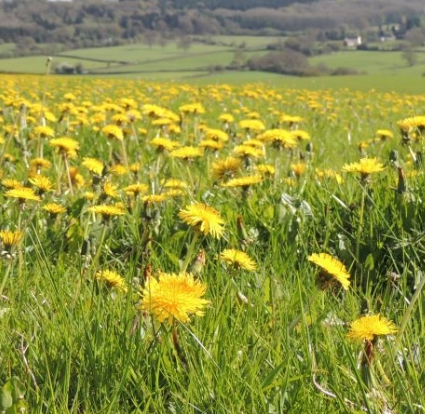Click Here for Factsheet
Resource explained
This short Bees for Development factsheet clearly describes simple actions you can carry out on your farm to encourage wild flower diversity and provide forage for bees and other insect pollinators.
It outlines that in addition to planting seeds of wild flowers, it is the cutting or grazing regime of meadows, field margins and verges that determines the diversity and number of wild flowers. This is to such an extent that planting seeds without the correct cutting regime will have short-lived results.
The factsheet describes the principles that govern cutting or grazing regimes and ways in which hay meadows, unimproved grassland, grass verges, municipal roundabouts, field margins and patches of garden or orchard can be managed to benefit flowering vegetation and insect pollinators.
It also includes a few useful Frequently Asked Questions in relation to encouraging wild flowers (which includes reference to yellow rattle), and links to other relevant information.
Findings & recommendations
- In order to encourage insect pollinators, any cutting should be carried out early and late in the year. Make sure you allow flowering herbaceous plants to grow, flower and seed in spring and summer, and remove cut vegetation to reduce the fertility of the soil.
- You should aim to encompass the following principles:
- Do not cut when flowers are growing, flowering and seeding.
- Ensure you cut often enough to discourage scrub such as bramble and unwanted tree saplings.
- Remove cut vegetation (including that cut for hay if the hay cannot be used) in order to reduce the fertility of the site. This discourages prolific grass growth and gives a wider variety of wild flowers the chance to thrive and provide pollen and nectar to insect pollinators.
- Cut on a high setting to allow plants with spreading, low habits to continue to flower.
- If you have an area of established unimproved grassland with a management regime and native species mix that dates back many years, you should not plough and seed with introduced species, but instead maintain through cutting and /or grazing.
- Yellow rattle can increase species diversity and encourage colonisation of other wildflower species.


